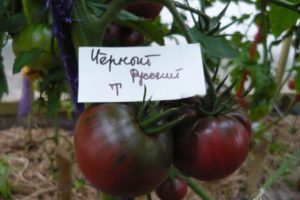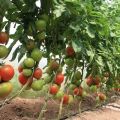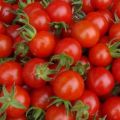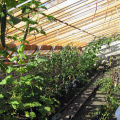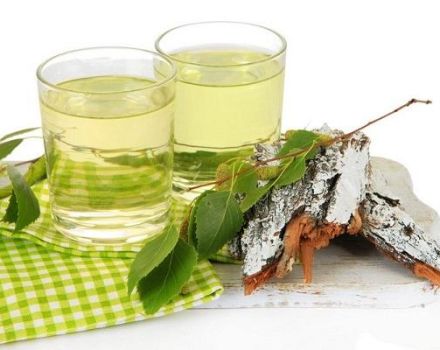Characteristics and description of the Rome tomato variety, its yield
Tomato Rome is a variety for gardeners who prefer large, fleshy fruits. Tomatoes are characterized by a sweet taste and a beautiful corrugated shape.
General characteristics of the variety
The variety belongs to the category of indeterminate, medium late or late, depending on the natural conditions of the region. Bushes are vigorous, massive. The height in a greenhouse reaches two meters. The average size of a bush is up to 1.6-1.8 meters.
Tomatoes are medium late. The growing season from the moment the first seedlings appear until the beginning of the ripening of the crop is at least 75 days. When growing Rome in mid-latitudes or northern regions with cool summers, this period increases to 80-90 days.
The variety has a good yield, a large mass of fruits... The average weight of one tomato is 600 grams. With proper care and control of the ovary, it is possible to obtain tomatoes weighing 1.5 kg. The fruits are characterized by a rounded, slightly flattened shape. The size is large. The shape is ribbed, especially in the area of the stalk. In a state of technical maturity, the color of a tomato is saturated red. Taste qualities are excellent. Tomatoes are meaty and sweet in taste.
The variety is best suited for fresh consumption and for making tomato juice.
Seed sowing rules
The Roman series of varieties belongs to the category of medium or late maturing. Their breeding is carried out by the seedling method.

- Seed planting is carried out in the last decade of February or the first decade of March. Before transferring seedlings to the ground, it should take about 60 days.
- For seeds, peat pots or seedling containers filled with tomato nutrient mixture are used.
- The seeds are pretreated with a manganese solution.
- The planting material is distributed with a density of 2-3 seeds per 1 cm. The seeds are buried no more than 1 cm.
- The containers are covered with foil until the first shoots appear and kept in a warm room.
- Plants are picked in phase 2 of true leaves.
- Fertilization at the seedling stage is done twice. The first feeding 5-10 days after the pick. The second is 7-10 days before transferring to the ridges.
Features of care and dignity of the variety
Rome tomatoes can be grown in greenhouse and outdoor conditions. The transfer of seedlings to the ground is carried out after the last frost, in the second half of May. Plants are placed in closed, heated greenhouses in mid to late April.
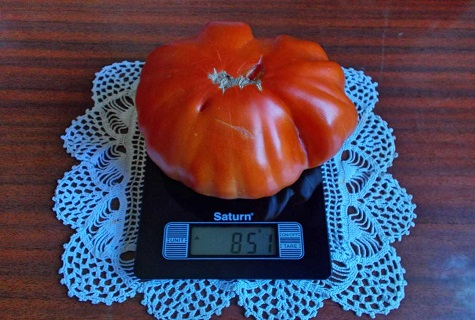
For seedlings, a ridge with holes is prepared, according to a scheme of 50 by 60 centimeters. No more than 2-3 plants are placed per 1 square meter. When caring for tomatoes, a number of rules are followed.
- Stealing. For a high yield tomatoes require pinching... The main bush is formed into 2-3 stems.
- Garter.The variety belongs to the category of tall. With proper care, plants can grow up to 2 meters tall. The garter is applied as the plant grows. The main stem is fixed, as well as brushes with fruits.
- Watering. Plants require abundant watering. For humidification, settled warm water is used.
- Loosening and weeding. Timely removal of weeds and loosening of the soil helps to avoid the development of diseases.
- Fertilizer. Tomatoes take organic fertilizers well. Top dressing is done several times. Fertilization is required 1-2 weeks after planting in the ground. The second time the tomatoes are fed at the stage of ovary and fruit formation.
- Accommodation. The Rome variety belongs to the late ripening. When placed in shaded areas, it produces a late harvest. For this reason, it is planted in closed greenhouses or in well-lit areas.

Numerous reviews made it possible to highlight the strengths and weaknesses of tomatoes. The positive qualities include:
- high productivity;
- large fruit weight;
- meatiness;
- disease resistance;
- unpretentious care.
Given the description of the variety, one of the main disadvantages is the late ripening of the crop. In the open field, the fruits ripen only in early August.
